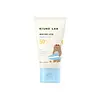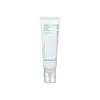What's inside
What's inside
 Key Ingredients
Key Ingredients

 Benefits
Benefits

 Concerns
Concerns

No concerns
 Ingredients Side-by-side
Ingredients Side-by-side

Water
Skin ConditioningZinc Oxide
Cosmetic ColorantPropylheptyl Caprylate
EmollientButylene Glycol Dicaprylate/Dicaprate
EmollientCaprylyl Methicone
Skin ConditioningButylene Glycol
HumectantMethyl Trimethicone
Skin ConditioningPolyglyceryl-3 Polydimethylsiloxyethyl Dimethicone
Skin ConditioningCaprylic/Capric Triglyceride
MaskingPolymethylsilsesquioxane
Methyl Methacrylate Crosspolymer
Magnesium Sulfate
Triethoxycaprylylsilane
Stearalkonium Hectorite
Gel FormingPanthenol
Skin ConditioningVp/Eicosene Copolymer
1,2-Hexanediol
Skin ConditioningLauryl Polyglyceryl-3 Polydimethylsiloxyethyl Dimethicone
Skin ConditioningPoly C10-30 Alkyl Acrylate
Emulsion StabilisingMethylpropanediol
SolventPolyglyceryl-3 Diisostearate
EmulsifyingPolyglyceryl-3 Polyricinoleate
EmulsifyingGlyceryl Caprylate
EmollientCaprylyl Glycol
EmollientEthylhexylglycerin
Skin ConditioningArtemisia Annua Extract
MaskingAnthemis Nobilis Flower Oil
MaskingAvena Sativa Kernel Extract
AbrasivePinus Sylvestris Leaf Oil
MaskingTocopherol
AntioxidantCeramide NP
Skin ConditioningDipropylene Glycol
HumectantCholesterol
EmollientPalmitic Acid
EmollientStearic Acid
CleansingHydrogenated Lecithin
EmulsifyingEctoin
Skin ConditioningGlyceryl Stearate
EmollientCeramide As
Skin ConditioningCeramide AP
Skin ConditioningCeramide Ns
Skin ConditioningCeramide EOP
Skin ConditioningWater, Zinc Oxide, Propylheptyl Caprylate, Butylene Glycol Dicaprylate/Dicaprate, Caprylyl Methicone, Butylene Glycol, Methyl Trimethicone, Polyglyceryl-3 Polydimethylsiloxyethyl Dimethicone, Caprylic/Capric Triglyceride, Polymethylsilsesquioxane, Methyl Methacrylate Crosspolymer, Magnesium Sulfate, Triethoxycaprylylsilane, Stearalkonium Hectorite, Panthenol, Vp/Eicosene Copolymer, 1,2-Hexanediol, Lauryl Polyglyceryl-3 Polydimethylsiloxyethyl Dimethicone, Poly C10-30 Alkyl Acrylate, Methylpropanediol, Polyglyceryl-3 Diisostearate, Polyglyceryl-3 Polyricinoleate, Glyceryl Caprylate, Caprylyl Glycol, Ethylhexylglycerin, Artemisia Annua Extract, Anthemis Nobilis Flower Oil, Avena Sativa Kernel Extract, Pinus Sylvestris Leaf Oil, Tocopherol, Ceramide NP, Dipropylene Glycol, Cholesterol, Palmitic Acid, Stearic Acid, Hydrogenated Lecithin, Ectoin, Glyceryl Stearate, Ceramide As, Ceramide AP, Ceramide Ns, Ceramide EOP
Water
Skin ConditioningDiethylhexyl Succinate
EmollientPropanediol
SolventTerephthalylidene Dicamphor Sulfonic Acid
UV AbsorberCaprylyl Methicone
Skin ConditioningEthylhexyl Triazone
UV AbsorberNiacinamide
SmoothingBehenyl Alcohol
EmollientDiethylamino Hydroxybenzoyl Hexyl Benzoate
UV FilterTromethamine
Buffering1,2-Hexanediol
Skin ConditioningPolysilicone-15
UV FilterSodium Polyacryloyldimethyl Taurate
Emulsion StabilisingPhenyl Trimethicone
Skin ConditioningBis-Ethylhexyloxyphenol Methoxyphenyl Triazine
Skin ConditioningC14-22 Alcohols
Emulsion StabilisingC30-45 Alkyl Cetearyl Dimethicone Crosspolymer
EmollientPolyacrylate Crosspolymer-6
Emulsion StabilisingHyaluronic Acid
HumectantEthylhexylglycerin
Skin ConditioningPanthenol
Skin ConditioningC12-20 Alkyl Glucoside
EmulsifyingAllantoin
Skin ConditioningCaprylyl Glycol
EmollientGlyceryl Caprylate
EmollientButylene Glycol
HumectantAdenosine
Skin ConditioningGlycerin
HumectantSodium Hyaluronate
HumectantSodium Metaphosphate
BufferingMadecassoside
AntioxidantGlyceryl Oleate
EmollientTocopherol
AntioxidantLecithin
EmollientLauryl Glucoside
CleansingPolyglyceryl-6 Laurate
EmulsifyingMyristyl Glucoside
CleansingHydrolyzed Hyaluronic Acid
HumectantCamellia Sinensis Leaf Extract
AntimicrobialSodium Hyaluronate Crosspolymer
HumectantXanthan Gum
EmulsifyingSodium Acetylated Hyaluronate
HumectantWater, Diethylhexyl Succinate, Propanediol, Terephthalylidene Dicamphor Sulfonic Acid, Caprylyl Methicone, Ethylhexyl Triazone, Niacinamide, Behenyl Alcohol, Diethylamino Hydroxybenzoyl Hexyl Benzoate, Tromethamine, 1,2-Hexanediol, Polysilicone-15, Sodium Polyacryloyldimethyl Taurate, Phenyl Trimethicone, Bis-Ethylhexyloxyphenol Methoxyphenyl Triazine, C14-22 Alcohols, C30-45 Alkyl Cetearyl Dimethicone Crosspolymer, Polyacrylate Crosspolymer-6, Hyaluronic Acid, Ethylhexylglycerin, Panthenol, C12-20 Alkyl Glucoside, Allantoin, Caprylyl Glycol, Glyceryl Caprylate, Butylene Glycol, Adenosine, Glycerin, Sodium Hyaluronate, Sodium Metaphosphate, Madecassoside, Glyceryl Oleate, Tocopherol, Lecithin, Lauryl Glucoside, Polyglyceryl-6 Laurate, Myristyl Glucoside, Hydrolyzed Hyaluronic Acid, Camellia Sinensis Leaf Extract, Sodium Hyaluronate Crosspolymer, Xanthan Gum, Sodium Acetylated Hyaluronate
 Reviews
Reviews

Ingredients Explained
These ingredients are found in both products.
Ingredients higher up in an ingredient list are typically present in a larger amount.
1,2-Hexanediol is a synthetic liquid and another multi-functional powerhouse.
It is a:
- Humectant, drawing moisture into the skin
- Emollient, helping to soften skin
- Solvent, dispersing and stabilizing formulas
- Preservative booster, enhancing the antimicrobial activity of other preservatives
Butylene Glycol (or BG) is used within cosmetic products for a few different reasons:
Overall, Butylene Glycol is a safe and well-rounded ingredient that works well with other ingredients.
Though this ingredient works well with most skin types, some people with sensitive skin may experience a reaction such as allergic rashes, closed comedones, or itchiness.
Learn more about Butylene GlycolCaprylyl Glycol is a humectant and emollient, meaning it attracts and preserves moisture.
It is a common ingredient in many products, especially those designed to hydrate skin. The primary benefits are retaining moisture, skin softening, and promoting a healthy skin barrier.
Though Caprylyl Glycol is an alcohol derived from fatty acids, it is not the kind that can dry out skin.
This ingredient is also used as a preservative to extend the life of products. It has slight antimicrobial properties.
Learn more about Caprylyl GlycolCaprylyl Methicone is a type of silicone.
It helps soften and soothe the skin by creating a thin film on top. This film helps trap moisture, keeping your skin hydrated.
Ethylhexylglycerin (we can't pronounce this either) is commonly used as a preservative and skin softener. It is derived from glyceryl.
You might see Ethylhexylglycerin often paired with other preservatives such as phenoxyethanol. Ethylhexylglycerin has been found to increase the effectiveness of these other preservatives.
Glyceryl Caprylate comes from glycerin and caprylic acid, a fatty acid from coconut. It has emollient and emulsifier properties.
As an emollient, it helps hydrate your skin. Emollients work by creating a barrier on your skin to trap moisture in, helping to keep your skin soft and smooth.
On the other hand, emulsifiers prevent ingredients (such as oil and water) from separating.
Learn more about Glyceryl CaprylatePanthenol is a common ingredient that helps hydrate and soothe the skin. It is found naturally in our skin and hair.
There are two forms of panthenol: D and L.
D-panthenol is also known as dexpanthenol. Most cosmetics use dexpanthenol or a mixture of D and L-panthenol.
Panthenol is famous due to its ability to go deeper into the skin's layers. Using this ingredient has numerous pros (and no cons):
Like hyaluronic acid, panthenol is a humectant. Humectants are able to bind and hold large amounts of water to keep skin hydrated.
This ingredient works well for wound healing. It works by increasing tissue in the wound and helps close open wounds.
Once oxidized, panthenol converts to pantothenic acid. Panthothenic acid is found in all living cells.
This ingredient is also referred to as pro-vitamin B5.
Learn more about PanthenolTocopherol (also known as Vitamin E) is a common antioxidant used to help protect the skin from free-radicals and strengthen the skin barrier. It's also fat soluble - this means our skin is great at absorbing it.
Vitamin E also helps keep your natural skin lipids healthy. Your lipid skin barrier naturally consists of lipids, ceramides, and fatty acids. Vitamin E offers extra protection for your skin’s lipid barrier, keeping your skin healthy and nourished.
Another benefit is a bit of UV protection. Vitamin E helps reduce the damage caused by UVB rays. (It should not replace your sunscreen). Combining it with Vitamin C can decrease sunburned cells and hyperpigmentation after UV exposure.
You might have noticed Vitamin E + C often paired together. This is because it is great at stabilizing Vitamin C. Using the two together helps increase the effectiveness of both ingredients.
There are often claims that Vitamin E can reduce/prevent scarring, but these claims haven't been confirmed by scientific research.
Learn more about TocopherolWater. It's the most common cosmetic ingredient of all. You'll usually see it at the top of ingredient lists, meaning that it makes up the largest part of the product.
So why is it so popular? Water most often acts as a solvent - this means that it helps dissolve other ingredients into the formulation.
You'll also recognize water as that liquid we all need to stay alive. If you see this, drink a glass of water. Stay hydrated!
Learn more about Water